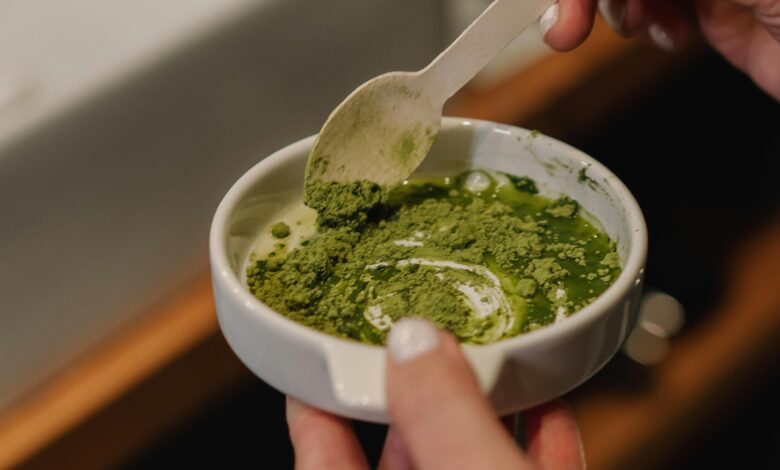How to Create a Holistic Self-Care Routine

In today’s fast-paced world, self-care has become more than just a buzzword—it’s a necessity for maintaining physical, mental, and emotional well-being. A holistic self-care routine goes beyond surface-level practices like bubble baths or face masks; it addresses the interconnectedness of your mind, body, and spirit. By nurturing all aspects of yourself, you can create a balanced, sustainable lifestyle that promotes long-term health and happiness.
In this article, we’ll explore how to design a personalized, holistic self-care routine that aligns with your needs, preferences, and goals.
What is Holistic Self-Care?
Holistic self-care focuses on caring for the whole person—mind, body, and spirit—rather than addressing one aspect in isolation. It recognizes that these elements are deeply interconnected and that neglecting one area can negatively impact others. For example, chronic stress (mental) can lead to physical symptoms like headaches or fatigue, while poor physical health can affect your emotional well-being.
A holistic approach ensures that you nurture every part of yourself, creating harmony and resilience in your daily life.
Key Components of a Holistic Self-Care Routine
To build an effective self-care routine, consider incorporating activities from each of the following areas:
1. Physical Self-Care
Physical self-care involves taking care of your body through movement, nutrition, rest, and hygiene. These practices lay the foundation for overall well-being.
- Exercise : Engage in activities you enjoy, such as yoga, walking, dancing, or strength training. Aim for at least 150 minutes of moderate exercise per week.
- Nutrition : Eat a balanced diet rich in whole foods, including fruits, vegetables, lean proteins, and healthy fats. Stay hydrated and listen to your body’s hunger cues.
- Sleep : Prioritize 7-9 hours of quality sleep each night by establishing a calming bedtime routine and maintaining a consistent sleep schedule.
- Hygiene and Grooming : Practice good personal hygiene, such as showering regularly, brushing your teeth, and grooming your hair. These small acts can boost confidence and mood.
2. Mental Self-Care
Mental self-care supports cognitive function, reduces stress, and fosters clarity and focus.
- Mindfulness Practices : Incorporate mindfulness techniques like meditation, deep breathing exercises, or journaling to calm your mind and improve awareness.
- Learning and Growth : Stimulate your brain by reading books, learning new skills, or engaging in creative hobbies like painting or writing.
- Digital Detox : Limit screen time and social media use to prevent information overload and promote mental clarity.
- Problem-Solving : Break overwhelming tasks into smaller steps and tackle them systematically to reduce anxiety and increase productivity.
3. Emotional Self-Care
Emotional self-care helps you process feelings, build resilience, and cultivate positive relationships.
- Journaling : Write about your thoughts and emotions to gain insight and release pent-up feelings.
- Therapy or Counseling : Seek professional support if needed to work through challenges or develop coping strategies.
- Positive Affirmations : Use affirmations to challenge negative self-talk and reinforce self-worth.
- Social Connections : Spend time with loved ones who uplift and support you. Set boundaries with toxic individuals to protect your emotional energy.
4. Spiritual Self-Care
Spiritual self-care nurtures your sense of purpose, meaning, and connection to something greater than yourself. This doesn’t necessarily mean religion—it could involve exploring values, ethics, or nature.
- Meditation or Prayer : Dedicate time to reflect, pray, or meditate to deepen your spiritual connection.
- Nature Immersion : Spend time outdoors hiking, gardening, or simply sitting in a park to feel grounded and connected to the earth.
- Acts of Kindness : Volunteer, donate, or perform small acts of kindness to foster gratitude and compassion.
- Reflection : Regularly assess your values, goals, and priorities to ensure alignment with your authentic self.
5. Social Self-Care
Humans are inherently social beings, and meaningful connections play a vital role in our well-being.
- Quality Time : Schedule regular catch-ups with friends or family members who energize and inspire you.
- Boundaries : Learn to say “no” when necessary and communicate your needs clearly to maintain healthy relationships.
- Community Involvement : Join groups or organizations that align with your interests to expand your network and contribute to a shared cause.
6. Professional Self-Care
Work-life balance is essential for preventing burnout and maintaining job satisfaction.
- Time Management : Organize your tasks efficiently to avoid overworking and make space for leisure activities.
- Skill Development : Invest in professional growth opportunities, such as workshops or courses, to stay motivated and engaged.
- Breaks and Vacations : Take regular breaks throughout the day and plan vacations to recharge and reset.
Steps to Create Your Holistic Self-Care Routine
Now that you understand the components of holistic self-care, here’s how to design a routine tailored to your unique needs:
Step 1: Assess Your Current Habits
Reflect on your current lifestyle and identify areas where you may be neglecting self-care. Ask yourself:
- Do I get enough sleep?
- Am I eating nutritious meals?
- How do I manage stress?
- When was the last time I did something purely for joy?
Step 2: Set Realistic Goals
Choose 1-3 areas to focus on initially. Setting too many goals at once can feel overwhelming. For example:
- Improve sleep by going to bed 30 minutes earlier.
- Start a daily gratitude practice.
- Walk for 20 minutes three times a week.
Step 3: Schedule Time for Self-Care
Treat self-care as non-negotiable appointments with yourself. Block out time in your calendar for specific activities, whether it’s morning meditation, evening journaling, or weekly yoga classes.
Step 4: Experiment and Adjust
Try different activities to see what resonates with you. If something doesn’t feel fulfilling, replace it with another option. Self-care should evolve as your needs change.
Step 5: Be Consistent but Flexible
Consistency builds habits, but flexibility prevents burnout. If life gets hectic, scale back rather than abandoning your routine entirely.
Sample Holistic Self-Care Routine
Here’s an example of a daily and weekly self-care routine:
Daily Routine
- Morning :
- Stretch or do light yoga for 10 minutes.
- Drink a glass of water and eat a nourishing breakfast.
- Write down three things you’re grateful for.
- Afternoon :
- Take a 10-minute walk during lunch.
- Practice deep breathing exercises to reduce stress.
- Evening :
- Disconnect from screens 30 minutes before bed.
- Reflect on your day through journaling or meditation.
- Get 7-9 hours of sleep.
Weekly Routine
- Physical : Attend two workout sessions (e.g., yoga class, gym session).
- Mental : Read a book or listen to a podcast on a topic you’re curious about.
- Emotional : Call a friend or family member for a meaningful conversation.
- Spiritual : Spend time in nature or engage in a reflective activity like prayer or meditation.
- Social : Plan a fun outing with loved ones or attend a community event.
Tips for Sticking to Your Self-Care Routine
- Start Small : Begin with one or two simple practices and gradually add more as they become habits.
- Be Kind to Yourself : Don’t guilt-trip yourself for missing a day. Self-care is about progress, not perfection.
- Track Your Progress : Use a journal or app to monitor your consistency and celebrate milestones.
- Seek Support : Share your goals with a friend or accountability partner to stay motivated.
- Prioritize Joy : Choose activities that bring you genuine happiness and fulfillment—not just those you think you “should” do.



